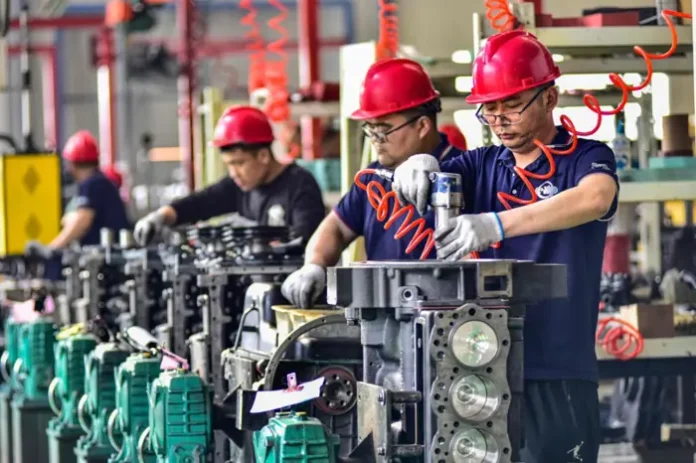Asian factories, including China’s manufacturing sector, showed signs of a modest recovery in August, with chip makers benefiting from robust demand, according to Reuters.
Experts say the prospect of slowing economic growth in the US and uncertainty over the outcome of the US presidential election are casting a shadow over the trade outlook. China’s Caixin/S&P Global manufacturing purchasing managers’ index (PMI) rose to 50.4 in August from 49.8 in July, beating analysts’ forecasts and surpassing the 50 mark that separates growth from contraction. Gabriel Ng, assistant economist at Capital Economics, said:
The PMIs for August suggest that economic momentum held broadly steady last month, with modest improvements in manufacturing and services helping to offset a further slowdown in construction activity. But with factory gate price declines accelerating, the economy clearly remains at risk of slipping back into deflation.
Factory activity in South Korea and Taiwan also increased in August, while the slowdown in Japan eased. Japanese manufacturers also gained from the recovery in car production after a safety scandal forced some plants to temporarily suspend production.
However, manufacturing activity in Malaysia and Indonesia declined, surveys showed. Toru Nishihama, chief emerging market economist at Dai-ichi Life Research Institute, stated:
Chip-producing countries are doing fairly well, but China’s slowdown will continue to drag on Asia’s manufacturing activity for quite some time. Slowing US demand could add to the pain on Asian economies, many of which are already wary of the fallout from sluggish Chinese growth.
Japan’s latest manufacturing PMI from au Jibun Bank Japan rose to 49.8 in August. South Korea’s PMI was 51.9 in the same month, up from 51.4 in July, partly due to strong customer confidence and new orders in the domestic market, a private survey found.
Malaysia’s PMI in August was 49.7, unchanged from the previous month, while Indonesia’s fell to 48.9 from 49.3 in July. Growth in manufacturing activity in India slowed to a three-month low in August as demand fell significantly.
The International Monetary Fund (IMF) forecasts that growth in the region will slide from 5 per cent in 2023 to 4.5 per cent this year and 4.3 per cent in 2025.
